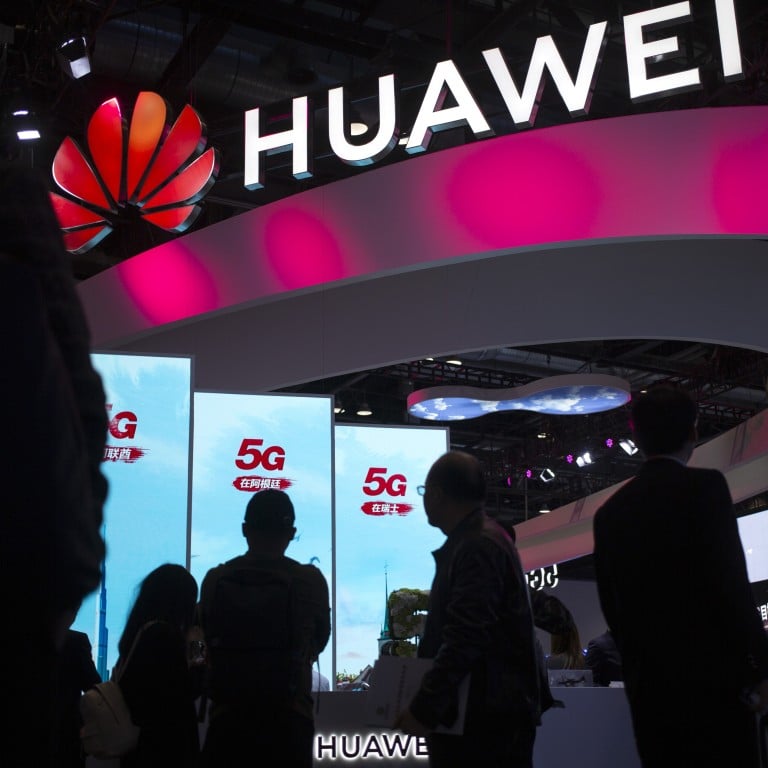
The unintended consequence of US campaign against Huawei could be a global split in technology standards
- The world could be set for a return to the 1980s when various regions used different telecommunications standards
The major unintended consequence, however, of the US action against China’s biggest technology company is that the world could be barrelling closer to a geographic split in hi-tech development and innovation, according to Paul Haswell, a partner who advises technology companies at international law firm Pinsent Masons. He said: “It’s like we’re heading back to the 80s, when North America supported a mobile communications system different from Europe’s, and Japan also ran its own wireless system.”
“The tech industry has been a major factor in expanding globalisation over the past decade, as innovation yielded global standards – such as those for the internet and advanced mobile networks – that have been widely adopted,” Haswell said. “My concern is that as US and Chinese tech development diverges, then so could trust in each country’s tech companies and innovations. That would be bad news for consumers around the world.”
Pai said “the end result [of China’s technological advances] is essentially to create two different internets”, with a version built by the Chinese government being heavily censored. “That will be something that’s unfortunate for consumers and something that’s potentially dangerous in the long run,” he said. “We don’t want the internet to be Balkanised.”
The privately-held company has not only recalibrated its operations under the stringent conditions of the US government’s Entity List, but has continued to push a global agenda for 5G – the next-generation mobile technology that will help power advances such as the industrial internet, autonomous driving and smart cities.
“On November 20, the US Department of Commerce granted Microsoft’s request for a licence to export mass-market software to Huawei,” a Microsoft spokeswoman said in an email.
Google, Qualcomm and Taiwanese electronics contract manufacturer Foxconn Technology Group, formally known as Hon Hai Precision Industry, did not immediately respond to emailed inquiries.
Huawei bought about US$70 billion worth of software, hardware and related services from various hi-tech suppliers last year, including US$11 billion from major US firms. Huawei declined to comment.
Still, the tech war between the US and China is expected to intensify and result in the splintering of global tech supply chains.
“There is an obvious de-Americanising trend for China’s OEMs (original equipment manufacturers) because of the technology competition, which I don’t think will be a short-term thing even with the interim US-China trade agreement,” said Zhang Jun, a senior research analyst at Rosenblatt Securities.
“In the next two to three years, there will be a set of supply chains completely without US products. I don’t think building a domestic supply chain will work, so Chinese OEMs will still rely on supply chains with products from other countries [outside the US].”
“The foundations of globalism have already been shaken by the [US-China] trade war and infighting between different trade blocs,” said Anshel Sag, a technology industry analyst with Moor Insights & Strategy.
American companies affected by the US Entity List have had a tough time to refine their strategy, and the uncertainty has ultimately forced them to be more conservative in their approach to Huawei and China as a whole, according to Sag.
While Google apps, for example, are not an issue in China’s restricted internet market, these are of critical importance to Huawei’s overseas smartphone business. Huawei introduced its own operating system, Harmony, in August, but the company said it had no plans to install that software on its smartphones yet because Android remains its top choice and it wants to protect the current app ecosystem.
“The future direction of the global telecommunications industry could be adversely affected by the restrictions that effectively ban Huawei’s participation in some markets,” said Mark Gregory, an associate professor in the School of Engineering at RMIT University in Melbourne, Australia.
Echoing the view of Pinsent Masons’ Haswell, Gregory said: “A consequence of the failure to permit Huawei to fully participate in telecommunications markets could be a return to the time when different regions of the world utilised different telecommunications standards, and the equipment and systems being deployed in the areas where Huawei’s participation is restricted could have reduced features and capabilities.”
Gregory suggested that such an outcome could be corrected by implementing “a security assurance capability for all vendor equipment and systems”.
Efforts by Washington to restrict Chinese access to American technology and block Chinese companies like Huawei from selling network equipment to the US and other countries have reinforced fears of 5G fragmentation, as more countries roll out their next-generation mobile networks.
“There is always the possibility of fragmentation in the 5G standard, especially since Huawei has the lion’s share of 5G patents and has contributed so much to the [universal] standard,” said Kevin Curran, a professor of cybersecurity at Ulster University in Northern Ireland. He indicated that speculation on that happening only fosters “uncertainty and that is never good for consumers in the long run”.
For more insights into China tech, sign up for our tech newsletters, subscribe to our award-winning Inside China Tech podcast, and download the comprehensive 2019 China Internet Report. Also roam China Tech City, an award-winning interactive digital map at our sister site Abacus.


